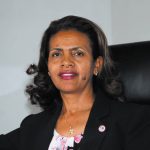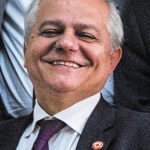Georges Kettaneh
Secretary General, Lebanese Red Cross
The Humanitarian Summit was much more than just a two-day meeting for 9,000 people. It began long before with preparatory meetings, including here in Lebanon. Whatever impact will be felt will go on well into the future. In theory, the pledge to develop longer-term financing and give more support to local organizations was very positive. But now we have to see how it will work at the local level. For me, the measure of success will be in how well we manage to build the capacity of principled local organizations such as National Red Cross and Red Crescent Societies which have community acceptance and are there to respond over the long term.
At the Lebanese Red Cross we understand this well. The Syrian crisis has lasted more than six years now and we have been going full-speed ahead since the beginning. We ramped up our response and our capacity in order to maintain the intensity of our response.
Before the conflict, the annual budget for our headquarters in Beirut was US$ 5 million. Today, it’s more than US$ 25 million. We grew our capacity to manage and control these resources by working with our partners. This is critical because strong, accountable and transparent organizations are more accepted by the community.
Our operational capacity has also expanded dramatically. The Lebanese Red Cross is leading and working with 21 National Societies, the IFRC and the ICRC. We are also sharing leadership in a lot of areas — health, nutrition and water, sanitation and hygiene promotion — and it’s a big challenge. It’s not just about responding but about working in complementary ways with government and other non-governmental organizations (NGOs).
It’s very important that donors and partners understand all this. International NGOs can leave when they run out of money but we are still here, facing the community. So we have to be very clear in our plans and commitments so we can manage the expectations of communities and expand or reduce programmes or staff and volunteers in a proper and dignified way. The commitments made at the Summit to provide longer-term funding and more unearmarked funding could help foster this kind of stability, reliability, continuity and dignity both for the dedicated first responders and for the people to whom they are offering their comfort, care and support.
Web extra
We also have to be sure that the commitment to give greater resources to local organizations does not lead to a repetition of unsuccessful aid patterns. The problem with some local organizations and National Societies is that they do not know how to say ‘no’ to funding when it’s offered. This can lead to National Societies expanding or contracting in ways that aren’t healthy for the organization. It becomes more of an implementer of projects rather than a strong, independent organization.
When a National Society has a clear vision, when it’s well connected to all branches and when it has transparent systems for recruiting volunteers and maintaining safe access to all communities, then it will not say ‘yes’ to everything. Rather it will do what it can according to the capacity of the volunteers and workers and how much they can absorb.
But it’s also important for the Movement, for National Societies, to use the Summit as an opportunity for their own self-improvement, so that they are well positioned to be the local providers of choice for donors and new partners. It is absolutely critical, for example, that National Societies go through the IFRC’s [Organizational Capacity Assessment and Certification] self-review process, which helps them take stock of their strengths and weaknesses. They should also conduct a thorough review of the internal statutes and national legislation that define their internal decision-making structures and their role in their countries so that there are clear understandings and rules vis-à-vis government. This clarity helps National Societies maintain independence and operate in accordance with principles.
These important steps will ensure that principled, locally rooted National Societies are able to play their role in the increased localization of humanitarian assistance that we hope to see in the future.
 Red Cross Red Crescent magazine
Red Cross Red Crescent magazine 







